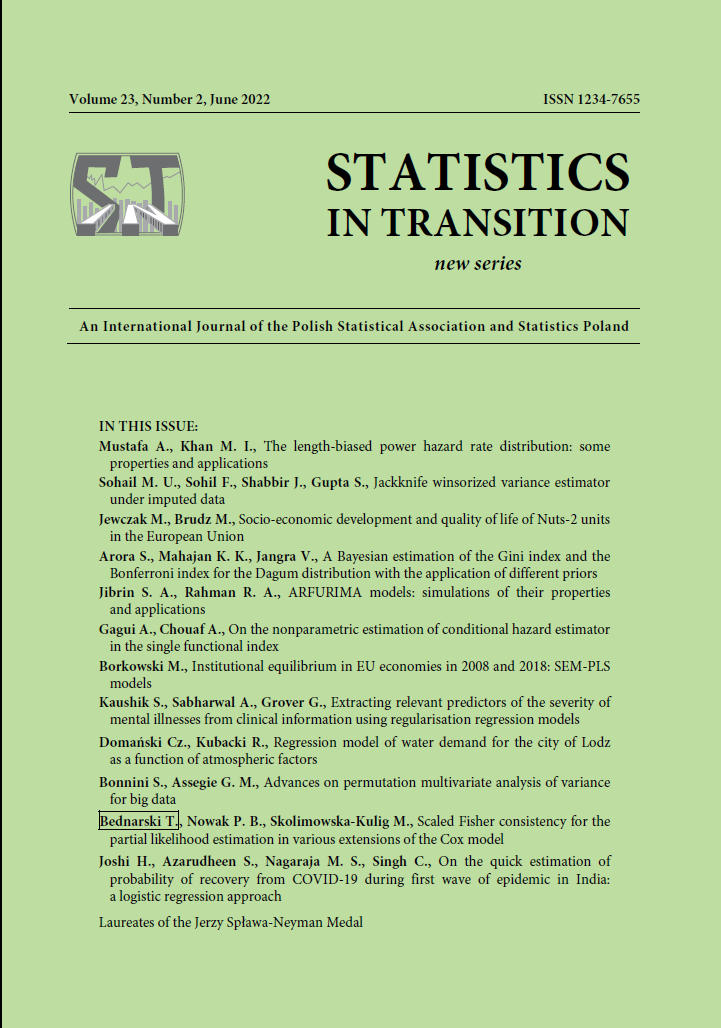ARTICLE
ABSTRACT
One of the Sustainable Development Goals (Goal 6) set by the United Nations is to provide people with access to water and sanitation through sustainable water resources management. Water supply companies carrying out tasks commissioned by local authorities ensure there is an optimal amount of water in the water supply system. The aim of this study is to present the results of the work on a statistical model which determined the influence of individual atmospheric factors on the demand for water in the city of Lodz, Poland, in 2010-2019. In order to build the model, the study used data from the Water Supply and Sewage System Company (Zakład Wodociągów i Kanalizacji Sp. z o.o.) in the city of Lodz complemented with data on weather conditions in the studied period. The analysis showed that the constructed models make it possible to perform a forecast of water demand depending on the expected weather conditions.
KEYWORDS
water demand, atmospheric factors, regression model
REFERENCES
Balling, R. C., Jr. Gober, P., (2006). Climate variability and residential water use in the city of Phoenix, Arizona. Journal of Applied Meteorology and Climatology, Vol. 46, pp. 1130–1137.
Bates, B. C., Kundzewicz, Z. W., Wu, S. and Palutikof, J. P., (2008). Climate Change and Water: Technical Paper of the Intergovernmental Panel on Climate Change. Geneva, Switzerland: IPCC Secretariat.
Géron, A., (2017). Hands-On Machine Learning with Scikit-Learn and TensorFlow, Boston: O’Reilly.
Ghiassi, M., Zimbra, D. K. and Saidane, H., (2008). Urban water demand forecasting with a dynamic artificial neural network model. Journal of Water Resources Planning and Management, Vol. 134, pp. 138–146.
Grus, J., (2018). Data science od podstaw, Katowice: Helion.
Harrington, P., (2012). Machine Learning in Action, Shelter Island: Manning.
Patterson, J., Gibson, A., (2018). Deep Learning. Praktyczne wprowadzenie, Katowice: Helion.
Praskievicz, S., Chang, H., (2009). Identifying the Relationships Between Urban Water Consumption and Weather Variables in Seoul, Korea, Physical Geography, Vol. 30, pp. 324-337.
Walesiak, M., Gatnar, E., (2009). Statystyczna analiza danych z wykorzystaniem programu R, Warszawa: PWN.
Zhang, H. H. Brown, D. F., (2005). Understanding urban residential water use in Beijing and Tianjin, China. Habitat International, Vol. 3, pp. 469–491.
